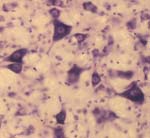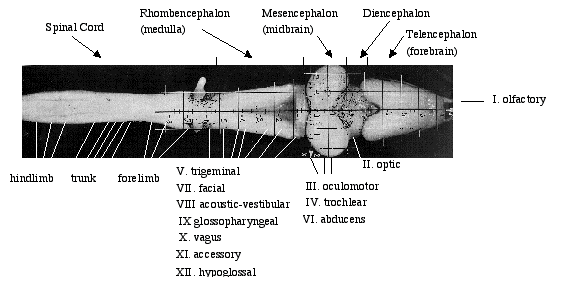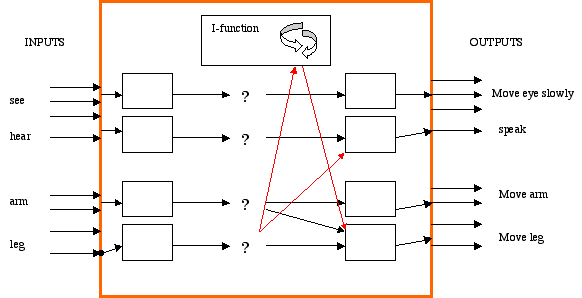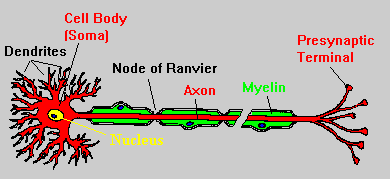Brain and Behavior Institute, 2005
Session 9
Neurons and How They Work: Potentials, Chemicals. Time, Inhibition
Recapitulation:


Neurons as input/output elements with intervening processing
- dendrites, soma, axon, synapse
Sensory neurons, motor neurons, interneurons
- overwhelming majority interneurons
Significance of interconnections - topographic organization of sensory, motor neurons - patterns of activity

Significance of interconnections - locating/acknowleding the distinct "I-function"

What is "choice"? What is maximizing or satisfying? Optimism or pessimism? Male or female? Willing to try new things or reluctance to try new things?
Are these questions about neurons or about assemblies (architecture)?
Moving on: Neurons
Potentials
Neuron as integrator with autonomy
Equivilence of signals
Inhibition, "thinking backwards"
Time delays in, among other things, "thinking"
Awareness of reality dependent on sensory transducers
General chemical influences
Key points re behavior:
- Neurons can be spontaneously active and "noisy"
The nervous system can generate output without input, and may be somewhat unpredictable
- Neurons are sensitive to chemicals
Ingested materials can function as inputs to the nervous system
- Neurons and neuronal signalling can be altered by use in a variety of ways
The nervous system is constantly changing
- Signals are pretty much the same in all neurons
Inputs, outputs, and everything in between are "patterns of activity"
- Neurons are responsive only to signals for which they have receptors
Our picture of "reality" is always incomplete
- Neurons enact choices but don't experience "choosing"
"Choosing" must be a property resulting from asseblies of neurons (architecture)
In what ways does knowing something about neurons cause you to think differently about behavior? Write thoughts in Institute Forum Area






